Can burning biomass be sustainable?
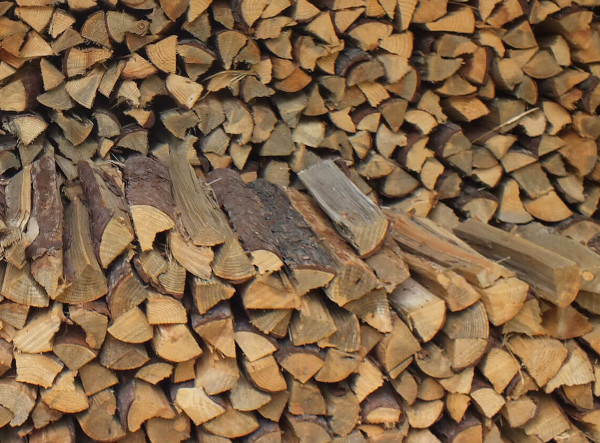
“Burning biomass is just another path to environmental destruction,” claims a recent article in The Ecologist. Really? Simon Fairlie, who has blithely been burning biomass for the last 50 years, investigates.
In May 2020 The Land received an unsolicited article entitled The Dangerous Bioenergy Delusion. The author, Katja Garson, works for the Climate Land Ambition and Rights Alliance, a body whose aims include “securing land rights for indigenous peoples and local communities” and “strengthening core forest protections and ecosystem integrity”.
The thrust of the article was a critique of the use of imported wood pellets, notably from the United States, to replace coal in large-scale power stations such as Drax — an industry that The Land has no hesitation in condemning. It is hard to imagine anything more ludicrously unsustainable than the chain of machinery which gobbles up trees in the southern USA, extrudes them as pellets, ships them across the Atlantic and converts them into electric energy so that Europeans can continue to enjoy a level of affluence unachievable for most people in the world. Many local people are furious at the damage done to their forests by logging corporations ripping out whole trees with Star-Wars machinery that first churns up and then compacts the soil. In any case, why send wood pellets to Europe to substitute for coal, when North Americans burn more fossil fuels than Europeans do?
However we declined to publish Garson’s article (which later appeared under the title “The Bioenergy Delusion” in The Ecologist)1 partly because we have already covered the matter in previous issues, but also because it contained unsubstantiated generalisations that went beyond a critique of the wood pellet/power station industry. This sort of thing:
“Burning biomass is just another path to environmental destruction . . . Burning biomass is terrible for the environment. Burning wood for energy emits more carbon on a per-unit-of-energy basis than burning coal . . . Let’s halt bioenergy, reduce emissions and protect natural carbon sinks and landscapes rather than relying on false solutions.”
This, incidentally, is from someone whose stated job is to defend the rights of people who burn biomass every day of their lives. Now one could dismiss these statements simply as sloppy hyperbole, of the kind that a judicious editor would cut, in order to reveal a basically sound argument. However this is not an isolated incident. Blanket condemnation of biomass burning as a carbon crime is becoming increasingly common amongst the environmentally pure. Firewood is the new meat. When Kris de Decker published an article in 2020 on using surplus heat from domestic woodburning stoves to produce modest amounts of electricity, he received a torrent of objections on these lines:
- “How is cutting down trees sustainable?”
- “This is pure insanity. Burning trees to reduce our carbon footprint is oxymoronic.”
- “The carbon footprint alone is just horrifying.”
- “As the recent film Planet of the Humans points out, biomass aka dead trees is not a renewable resource by any means, even though the EU classifies it as such.”
- “Article fails to mention that a wood stove produces more CO2 than a coal power plant for every ton of wood/coal that is burned.”2
Undeterred, De Decker responded by publishing an article on the sustainable benefits of harvesting coppice wood.
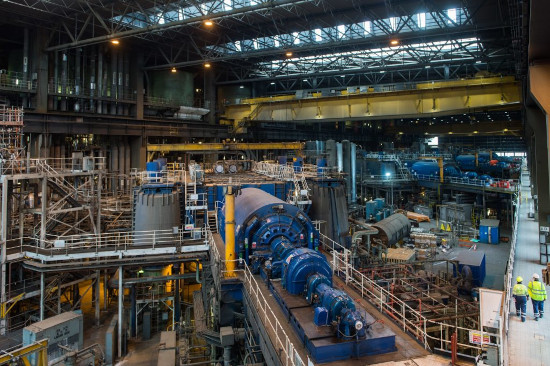
Schismatic Science
The kind of views expressed in the above comments have been bandied around for some time in green circles, notably by the campaigning group BioFuel Watch. The sources cited by Garson are a 2019 article in the New York on-line news service vox.com, and a 2014 feature on the website Ecowatch. But a more authoritative and high profile source of the view that burning biomass is bad for the climate is a 2017 report prepared for the prestigious think-tank Chatham House called Woody Biomass for Power and Heat.3 Its author is Duncan Brack, who was an adviser to Chris Huhne when he was Secretary of State for Energy and Climate Change from 2010 to 2012.
Brack’s report caused quite a stir. Shortly after its publication, 145 professors and academics signed a fully referenced 13 page letter, explaining how the report “fails to present an accurate description of the current state of understanding informed by climate science . . . and refers to extreme cases that do not represent current practice.”
The academics were supported by a further 112 signatories, most of whom represented the forestry and wood pellet industry, including bodies such as Weyerhauser, Drax, and the US Industrial Pellet Association — a fact that did little to enhance their credibility as independent scientists.4
This letter prompted a second letter from a different set of scientist, 50 in all, in support of the Chatham House Report.5 Governments like to say that their policies are informed by “the science”; but in this case, as in many others, scientists are at loggerheads with each other.

Carbon Debt
Brack’s report uses three main arguments to cast biomass burning as a climate villain worse than coal. The first is referred to both by Garson and by one of De Decker’s critics:
“Burning wood for energy emits more carbon on a per-unit-of-energy basis than burning coal.”
This is true, if you examine only the moment of combustion and ignore the complete life cycle of both fuels. At Drax woodpellets emit 12 percent more carbon per kilowatt hour generated than coal. But this doesn’t include the fossil carbon emitted in the form of methane through the mining and distribution of fossil fuels, which globally is more than the volume of methane emitted by livestock. Moreover, a forest, once felled, begins to grow again and reabsorb the carbon lost, whereas a coal field doesn’t. Forests recycle existing atmospheric carbon, fossil fuels release hitherto unavailable carbon into the biosphere where it accumulates, and takes thousands of years to degrade.
OK, says Brack, playing his second card, but there is a time-lag:
“The carbon dioxide emitted by burning woody biomass for energy is indeed absorbed from the atmosphere by forest growth, but this takes place only over time . . . The carbon dioxide (and other greenhouse gases) released by the burning of woody biomass create what is termed a ‘carbon debt’ . . . Over time, regrowth of the harvested forest removes this carbon from the atmosphere, reducing the carbon debt. The period until carbon parity is achieved (ie the point at which the net cumulative emissions from biomass use are equivalent to those from a fossil fuel plant generating the same amount of energy) is usually termed the ‘carbon payback period’.”
This payback period, according to the report could be anything up to 400 years but is 12–46 years for the use of thinnings and additional fellings from existing plantations with a 20–25 year rotation.
It is true that a sapling takes time to grow back to the scale of the felled tree it replaces. But the carbon debt concept relies on a failure to appreciate what a sustainable forestry harvest comprises — namely a rotation in which the sum total of trees, timber and hence carbon on a given area of land remains the same year on year. That shouldn’t be hard to understand, but as some people, even prominent academics, seem to have trouble I have illustrated it with a diagram showing how this dynamic operates at a very basic level.

In this diagram there are five equally sized coupes, or plots, each of which grows at a rate that (for ease of argument) increases the amount of carbon stored in it by one tonne each year, contributing to a total sum represented by the figure in each box. Coupe A, for example is felled at the beginning of Year One, and gains a tonne of carbon in that year and in each subsequent year; at the end of Year Five, when it has accrued five tonnes of carbon, it is felled once again and the rotation restarts. Year Six is the same as Year One. It will be readily seen that the entire five coupe coppice continues indefinitely to hold the same amount of carbon at the end of each year, namely 15 tonnes.
Where, one asks, is the carbon debt? And what has the fact that wood converts into energy less efficiently than coal got to do with it? Such a coppice rotation would still be carbon neutral even if the entire crop of each coupe were consigned to a bonfire or consumed by a forest fire every five years.
The same basic arithmetic applies for rotations of any number of years. It applies if the annual growth rate is not constant, as long as it is the same for each coupe. It applies whether the rotation in question is a coppice, or a plantation, or a swidden “slash and burn” regime. It is equally valid for continuous cover forestry if, for example, one tree in fifty is felled and replaced with a sapling every year for fifty years. And it can plausibly be used over the scale of a whole country, continent or planet to argue that, as long as the total volume of wood biomass is not decreasing (as is currently the case in the USA and Europe) then there is no carbon debt.
Carbon Foregone
Undaunted by this logic, the Chatham House report adopts the following rebuttal:
“A similar argument is that, as long as the trees are harvested from a forest that is sustainably managed, their carbon emissions should be considered to be zero: effectively, forest growth, replacing the logged trees, cancels out the emissions released when burnt . . . This argument ignores the carbon sequestration foregone from harvesting the trees: they would have continued to grow and absorb carbon if left un-harvested, and the uptake of carbon therefore falls when they are logged, whether or not the forest is sustainably managed.”
And it then continues:
“This is not true only if the forest grows more slowly in the absence of logging for energy, or if harvesting promotes additional growth fast enough to replace the carbon emitted when burnt.”
It is indeed the case that if trees are left standing rather than harvested for fuel they will normally continue to absorb some carbon. If the volume of timber continues to increase at a constant rate indefinitely — like the hypothetical coppice above — then burning would simply release back into the atmosphere carbon that would otherwise be locked up, much as if it were fossil fuel. But in real life that’s not what happens. If it did, trees would never die and forests would just get denser. The normal growth pattern of a tree follows an S-shaped curve: growth is slow when the tree is young, accelerates steeply as it starts to mature, then slows down as it ages and stops when it dies.
Since the carbon content of an evenly aged woodland is related to the volume of timber in its trees, that too tends to follow an S-shaped curve over time. A stark example can be seen in the graph below showing the carbon capture achieved by stands of red mangrove harvested for charcoal production in Thailand.
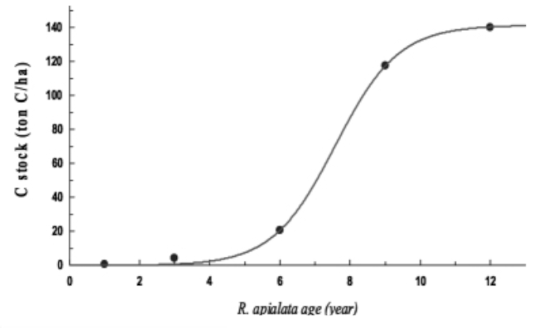
The carbon content barely increases at all after year 12. It is clear that if the stand is harvested any time after this the amount of carbon sequestration foregone is negligible. By year 24, the quantity of carbon stored in the plantation would be more or less the same whether or not a charcoal harvest had been taken in year 12. This is a case where, to put it in the report’s own words:
“The forest grows more slowly in the absence of logging for energy, and harvesting promotes additional growth fast enough to replace the carbon emitted when burnt.”
In fact there will always come a point, sooner or later, when this is the case. Slower growing trees require a longer cycle, sometimes much longer, but the same dynamic applies. US Department of Agriculture tables estimating the rate of timber growth and carbon capture for a number of North American woodland ecosystems indicate that there comes a point in the S curve where it is more advantageous to fell and replant than to let the old stand continue to grow (in respect of timber volume this is known as the Biologically Optimum Rotation Age).6
For instance in the case of loblolly/shortleaf pine in the South East of the USA — trees commonly used for wood pellets — after 90 years a stand will have captured 119 tonnes of carbon. But if the stand is clear cut entirely for firewood every 30 years, then after 90 years the total amount of carbon burnt as a substitute for fossil carbon is 166 tonnes.7 Using this wood to substitute for oil consumption by heating American homes efficiently would result in lower net carbon emissions than either of the other two options: namely, leaving the timber standing to absorb the carbon from burning fossil fuels, or shipping pellets across the Atlantic to generate electricity inefficiently in Europe.
Default Firewood
There are several other factors that complicate the bioenergy/carbon-storage equation. Slower growing trees reaching maturity are more often felled for timber than for fuelwood. Any part of a tree that becomes a timber product continues to live on as a carbon store, while more carbon is captured in the young trees that replace it. Sooner or later these products come to the end of their useful life — for roof timbers it might be after 200 years, for fence posts it might be after 20 years, for shopfitters’ fibreboard it might be after two years, for a newspaper it might be two weeks — and when that happens, if they cannot be recycled as another product, their most likely and most useful fate is to be burnt for fuel. The volume of timber products commercially recycled as woodfuel in the UK almost quadrupled between 2011 and 2018 when it reached 2.1 million tonnes, without counting anything burnt domestically.8
Moreover, not all of a timber-quality tree is sawlog quality by any means. Some debris from felling must be left on the forest floor to maintain soil condition and biodiversity. But boughs, branches, sawmill off-cuts, sawdust and other by-products of the timber industry are all burnt for heat or power.
Finally, what is left standing in a timber rotation towards the end of the cycle, is not the entire inventory of what has grown. Not all trees grow at the same rate. Some dominate while others are shaded out, die and rot, yielding much of their stored carbon back to the atmosphere. In a managed forest, to further benefit the stronger trees, and produce better timber, these weaker ones are thinned out before they die, and sold, mostly for pulpwood or firewood. Thinning may also be carried out to protect the woodland from forest fires, or to remove trees that are diseased or attacked by insects.
The volume of thinnings is often far from negligible. For example, a stand of Sitka Spruce grown in Somerset and felled when its growth rate peaked at the age of 57 yielded a total of 879 cubic metres per hectare (equivalent to 15 tonnes per hectare per year). Forty per cent of this was from thinnings felled before the final cut.9
With the exception of short rotation coppice, the overwhelming majority of the wood that is burnt in Europe is a by-product of woodland that is maintained primarily for other reasons, be it for timber, for biodiversity, for amenity, for shelter, for shade, for water retention or for a combination of any of these. As such it can be termed “default firewood”, in the same sense that we may use the term “default livestock” to describe animals that are an integral part of an agro-ecological system.10 Default firewood arises whether we seek to produce it or not, so we might as well use it.
Some of what we are burning now was grown and harvested long ago and some of what is being grown and harvested now won’t be burnt until long in the future. But there is a constant stream of it, and a constant stream of new fuel replacing what we have burnt. Fire keeps flowing through time, like water.
Provided that woodlands and forests in aggregate are not declining in extent or density, then this stream of fuel is a renewable resource that can supply us with a sizable quantity of heat energy indefinitely — whereas there are limits to the amount of carbon that can be stored in trees. The acknowledged purpose of increasing forest biomass to store carbon is to “gain time”, which effectively means continuing to use fossil fuels for longer, notably for air traffic (see “Quality not Quantity”, The Land 26. p5). Burning biomass from sustainably managed woodland is a viable alternative to the release and accumulation of fossil fuel carbon in the atmosphere, and is a key weapon in the fight against global warming. The attempt to argue otherwise is scientific sophistry, and, to borrow a phrase, a dangerous bioenergy delusion.
REFERENCES
1. Katja Garson, “The Bioenergy Delusion”, The Ecologist, 21st May 2019, https://theecologist.org
2. Kris de Decker, “How to Make Biomass Energy Sustainable Again”, Low Tech Magazine, 2020, https://solar.lowtechmagazine.com
3. D Brack, Woody Biomass for Power and Heat. Chatham House, 2017.
4. A Cowie et al, Response to Chatham House report “Woody Biomass for Power and Heat: Impacts on the Global Climate”, IEA Bioenergy, https://www.ieabioenergy.com)
5. M McGrath, Burning Wood for Energy Ignites Fierce Academic Row, BBC, 15 March 2017; A Agostini et al, Why the IEA Bioenergy Group got it Wrong Concerning the Chatham House Report 2017. http://www.eubioenergy.com
6. J. Smith et al, Methods for Calculating Forest Ecosystem and Harvested Carbon with Standard Estimates for Forest Types of the United States, USDA, 2005, https://www.fs.usda.gov/
7. Ibid, Table A 47. These figures are for non-intensive timber stands. In highly productive loblolly/shortleaf stands (Table A48) the difference is much greater. Three 30 year old harvests yield firewood comprising a total of 343 tonnes of carbon, while a 90 year stand captures 119 tonnes, the same as a non-intensive stand. In fact the productive stand is about 96 percent carbon saturated after 30 years. On the other hand, slow growing species, have a greater optimum rotation age of 60 or even 100 years, are usually more suitable for timber use and are more appropriate for carbon capture.
8. Forest Research, “Woodfuel and Pellets” in Forestry Statistics 2019, https://www.forestresearch.gov.uk
9. M Jenkins, Forest Yield, Forestry Commission, 2016, https://www.forestresearch.gov.uk
10. S Fairlie, Meat: a Benign Extravagance, Permanent Publications, 2010, pp 35-43; also “Eating the Platter Clean”, The Land 24, 2019.
The views expressed in our blog are those of the author and not necessarily lowimpact.org's
8 Comments
-
1Mike Eaton August 15th, 2021
Interesting if longwinded artilce. BUT! Can we throw all the scientific gobbledgook to one side for a moment, or does that gobbledegook make some feel important – for many it confuses rather than dazzles I’m afraid.
Biomass or as I prefer to call it wood is a plantform during its life. Mentioning coal and wood (Biomass) is to my mind talking about the same thing, the process of producing new takes time, in some cases a very long time but once, a long time ago Coal was biomass, it then went through various processes to make it into fossil fuel or Coal. the difference is the amount of time required as much as anything else, making large holes in the ground to obtain the coal is something completely different. Coppicing meanwhile is a way to harvest that bio…..wood over a reasonable time in a way that allows new wood to replace removed older wood such that there is always a supply of it available. But please remember that chopping down large areas of forrest (wood) removes that wood completely, such as chopping down the Amazon to grow something else of back along chopping down all the oak forrests in England (amongst other places) to build ships has removed far to much from the land.
Digging out coal has much the same effect, just that instead of some 40 to 50 years to replace some woods, we need some 40 to 50 thousand (40000 to 50000) years to replace it – a little too long methinks for any reasonable replacement programme, unless of course we can increase our lifespans accordingly.
Therefor to my mind and in a “nutshell” (also biomass it seems?) whilst coppicing can replace cut down wood to use as fuel it must be done very carefully to make sure we (as in all ‘umans) must do so very careful so as to not deplete that wood to a stage where it is no longer sustainable!
Now I’m sure I will get “shouted at” nicely of course as people do in these discussions, but that is the way (and I’m sure many others do too) I believe.we must go until something better can be found to replace it – remember for many in the world today there is no “something better!” thank you for listening (? sort of?)
The Walrus
-
2Chrissie August 15th, 2021
Very informative article. I won’t be getting rid of the stove.
I am wondering about “heat logs” (tightly compressed sawdust and wood chips) as a method of heating the home. All the selling websites say that the logs are formed from sawmill waste, so I am assuming that is an OK way to heat our home. Does anyone believe that it is not? I don’t just want to take the sellers word for it. Maybe I am not taking all factors into account. Let me know what you think, as, up here in Pictland we really need to prepare for the winter as best we can. Thanks.
-
3Mike Eaton August 15th, 2021
And I thought you Picts just ran around half dressed because you are such a hardy race . . . oh hang on were you not just about all wiped out by some kilt wearing heathens? As to “heat logs” whilst I have never heard of them but considering they are a lot of sawdust with a few bits of probably softwoods inside I’d have my doubts the would need to be very tightly wrapped or they would burn away very quickly, sounds like a cheap way of producing “wood pellets”. I’d try to get a minimum order if possible and try them, now before you actually need them. But from experience remember the old “paper logs” rolls of used newspaper rolled up tight? I never could get used to them, found they were pretty hard to get going but once they did light burnt out very quickly, economically not worth it and the paper would have been better recycled into something else – like next weeks news papers! Good luck
the Walrus
-
4itwisnaemoiChrissie August 15th, 2021
THE WALRUS
They are extremely tightly compressed and burn for ages. I am just trying to ensure that I am being environmentally friendly before I order a ton.
-
5Gus August 15th, 2021
Hi Chrissie,
We’ve used heat logs in the past to great effect. They’ve stayed smouldering all night long in the wood burning stove. Different ones are better than others, we don’t tend to use them any more because our neighbour provides us with local firewood. I reckon that some heat log production methods are (ecologically) better than others too, but I never really got to the bottom of how they were made. With some of them you need to be able to get a good kindling fire going first, other ones light more easily.
I wish you a cosy winter,
Gus
-
6Mike Eaton August 16th, 2021
itwasnaemoiChrissie – if as you say they are well compressed they sound like a good idea. From an environmental point of view using compressed bits of discarded cuttings seems a good idea. The only thing I have my doubts about is the softwood/hardwood ratio but if being used to primarily heat the home and not for cooking (softwood does not push out the same amount of heat plus it tends to sputter a lot whilst burning) and inside an enclosed stove it looks like they may be good for what you want – and a ton? Nice bulk order, thus cheaper and should last most of the winter – go for it!
The Walrus
-
7Paul Mustarde August 19th, 2021
Fantastic, informative article. Great to see the science and ,logic supporting the sustainable use of biomass. Thanks
-
8Andy liu September 29th, 2021
Regarding carbon emissions, cork oak tree reduces carbon dioxide emissions by 67,200 tons per year, and its skin can be used for various productions, such as natural cork fabric, recyclable cork wallpaper, fashionable and environmentally friendly cork bags, etc., which is the best for nature Lifestyle.
See for instance:https://www.hzcork.com




 Historically heating: forgotten ways to keep warm this winter
Historically heating: forgotten ways to keep warm this winter
 Biochar on trial: what scientific research tells us so far
Biochar on trial: what scientific research tells us so far
 The pros and cons of second-hand stoves: what to consider before you buy
The pros and cons of second-hand stoves: what to consider before you buy
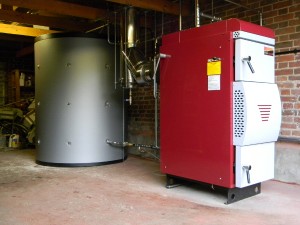 Biomass boilers
Biomass boilers
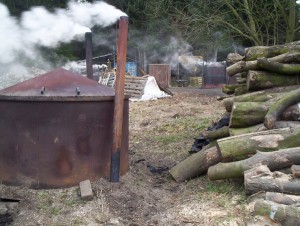 Charcoal making
Charcoal making
 Low-impact energy
Low-impact energy
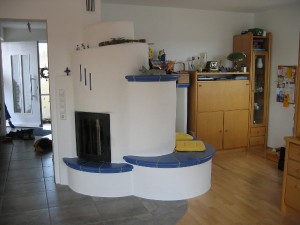 Masonry stoves / kachelofens
Masonry stoves / kachelofens
 Tree / woodland management
Tree / woodland management
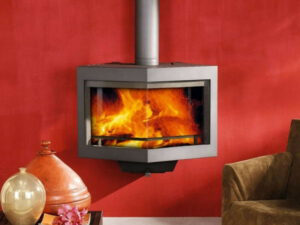 Wood stoves
Wood stoves


